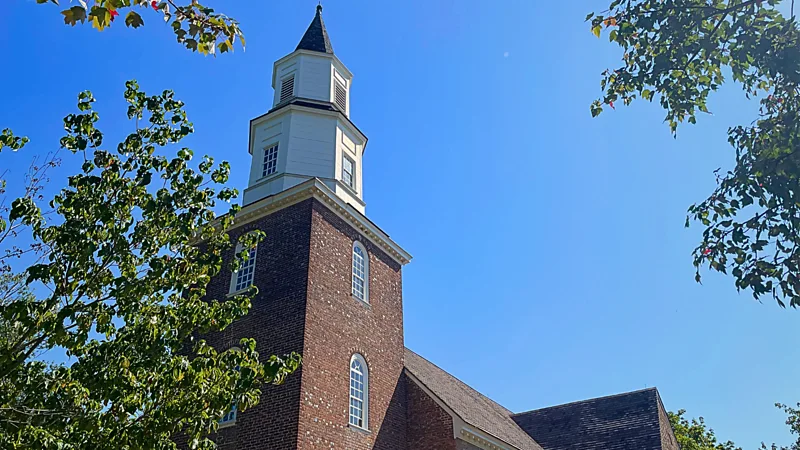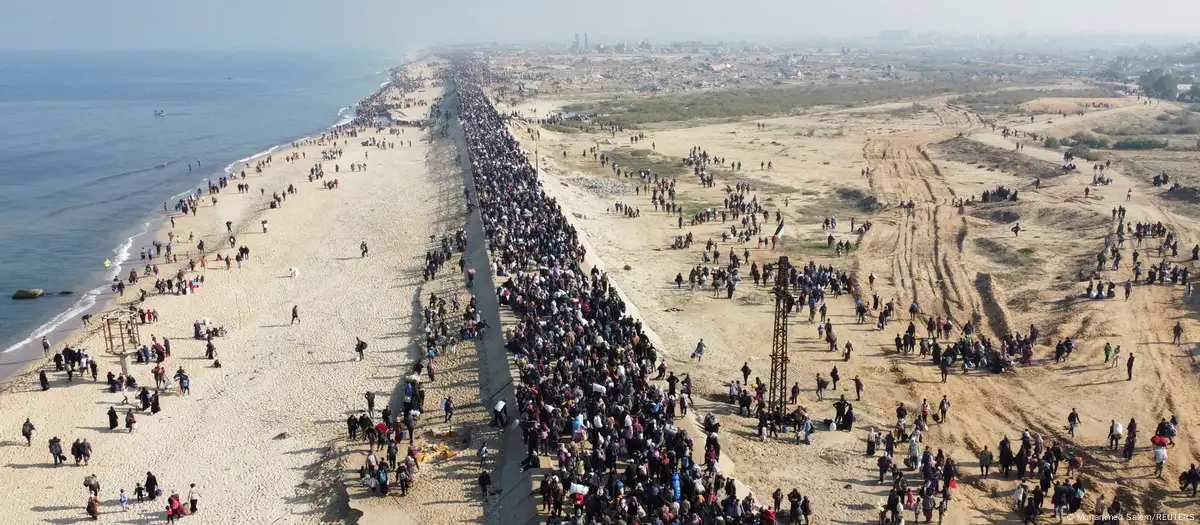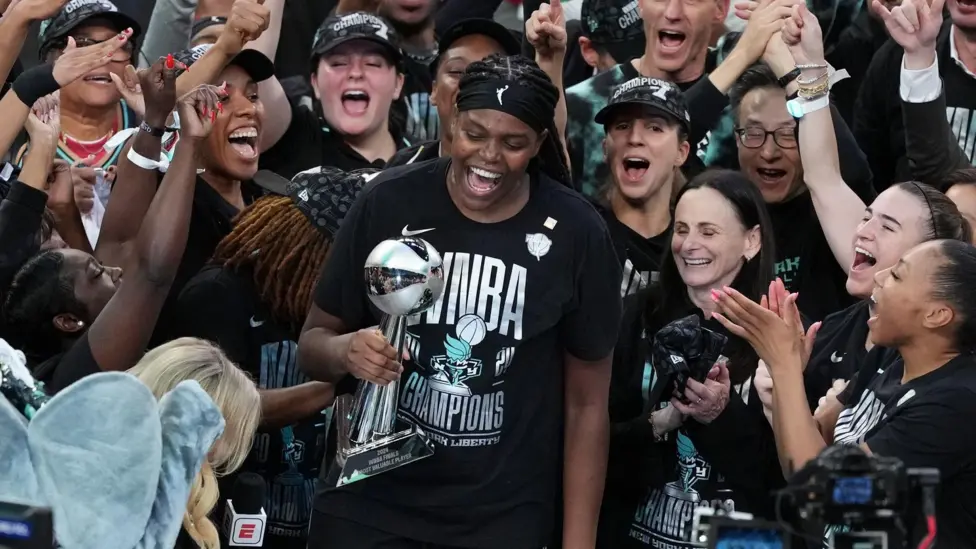The illegal church at the heart of US history
In the heart of what was once Britain's largest colony in the New World, a "secret" church reveals how Black people lived and worshipped in the US's earliest days.

The peal of a church bell cuts through the humid air in Williamsburg, Virginia. It's not just a call to worship; it's a declaration of resilience, faith and freedom. Since the United States' founding in 1776, African Americans have gathered at First Baptist Church, making it one of the nation's oldest continuous Black congregations.
Founded in 1632, Williamsburg served as the political and cultural capital of Britain's largest colony in the New World from 1699 to 1780. Today, Colonial Williamsburg – a 301-acre historic district featuring more than 600 restored and reconstructed homes, shops and taverns – is sometimes hailed as the "world's largest living history museum". Exploring its cobbled streets and interacting with its costumed interpreters offers a rare opportunity for visitors to time travel to the US's earliest days.
Williamsburg's taverns and government halls are where the US Founding Fathers debated the course of a new nation. Meanwhile, free and enslaved Black people – who comprised more than 52% of the town's population – toiled in its kitchens, built its homes and grew okra, basil and peanuts in its fields. They cooked the meals at King's Arms Tavern, crafted the bricks that line Duke of Gloucester Street and transported dignitaries in horse-drawn carriages, helping to shape the culture and foundation of what would become the United States.
Yet, it was illegal for Black residents to worship in a church without white supervision. "We did it anyway," said Connie Harshaw, president of the Let Freedom Ring Foundation, which works to conserve First Baptist Church's buildings and artefacts.
The church, founded by free and enslaved African Americans at the height of the American Revolution, is one of the first independent Black congregations in America. Its existence reveals how Black Americans were actively shaping their own destiny, even as they were denied basic human rights. Yet, for too long, the nation's foremost site of early American history offered only a fleeting acknowledgement of this story, mirroring the US's broader failure to reckon with its past.
Worshippers first met in secret, gathering on nearby plantations and later in a secluded, densely wooded area known as Raccoon Chase, where a historical plaque now stands. In 1776 – the same year the Declaration of Independence ironically proclaimed "All men are created equal" – the loosely knit congregation formalised itself as the Baptist "African church".
By 1805, a white landowner offered congregants a swampy plot on Nassau Street where they built their first meetinghouse. Although a tornado destroyed the church in 1834, the congregation, then 500 strong, rebuilt a larger brick church on the same spot in 1856. Women raised funds to purchase a bell for the steeple, which called worshippers to service for decades before falling into disuse.
By the 20th Century, the thriving congregation was now called First Baptist Church, but new threats emerged. Beginning in 1926, businessman and philanthropist John D Rockefeller Jr and Reverend Dr WAR Goodwin planned Williamsburg's restoration, focusing only on structures central to the settlement's Anglican and white colonial past. First Baptist Church didn't fit that vision, and the building was demolished, paved over for a bus depot. The congregation relocated yet again to nearby Scotland Street in 1956.
Today, Colonial Williamsburg's restored and reconstructed buildings are designed to represent life in early America, but for generations, the site failed to incorporate the stories of African Americans, who shaped and built the colonial capital.
"We've always had African American interpreters in costume," said Janice Canady, African American Community Engagement Manager at the Colonial Williamsburg Foundation and a descendent of the church's early members. "But telling the fuller story has been a struggle. People aren't always comfortable with the truth," she said.
Part of the challenge with uncovering that truth was that much of Williamsburg's Black history was passed down orally, making it difficult to pin down hard facts. In 2016, a dedicated steering committee was formed to document First Baptist Church's history and secure its rightful place in Williamsburg's narrative. One of the committee's first initiatives was restoring the church's early bell that hadn't rung since segregation. "It's the sound of freedom when it rings," Harshaw said.
When the Smithsonian National Museum of African American History and Culture opened in Washington DC in 2016, the 500lb relic – fittingly known as the Freedom Bell – travelled to the nation's capital, where it was rung by President Barack Obama and four generations of a family descended from enslaved people for the dedication ceremony.
In the years since, the committee has worked to convey that the bell, the church and everything they represent isn't just Black history; it's America's history.
"History happens only once," Harshaw said. "We were all here at the same time, the same place. We may have had different experiences, but we have a shared history."
What started as a search for early church records, photographs, bibles and communion sets soon became something bigger. The Let Freedom Ring Foundation was formed and, partnering with Colonial Williamsburg, they excavated the paved-over bus depot on Nassau Street. What followed was an unexpected archaeological discovery.
In 2020, excavations unearthed a trove of artefacts extending beyond the church that reveal how Williamsburg's early African American community lived in the face of slavery.
"One example is animal bones from meals being eaten on-site," explained Jack Gary, executive director of archaeology at Colonial Williamsburg. "People were coming together, worshiping all day, eating together. And remains of the food they were eating were left behind."
Analysis revealed the remains of pork, beef and poultry, but also wild game like opossum, raccoon and muskrat. "When we shared these findings with church descendants, one cousin mentioned their family still eats muskrat today," Gary said. "It's cool to make that connection, what we see in the ground and modern community."
But the most profound discovery was the burial site: 62 intact graves.
"We exhumed three to confirm their ancestry," Harshaw said. "DNA tests and analysis confirmed they were of sub-Saharan descent. They are believed to be early congregants of the church."
In a solemn ceremony in autumn 2024, Williamsburg dedicated dozens of grave markers to these early congregants – many of whom are directly related to area residents who still attend First Baptist Church today. Efforts are now underway to reconstruct the wood-framed meetinghouse on its original foundations. Perhaps most importantly, many feel that Colonial Williamsburg is making meaningful strides to integrate the experiences of Black residents into the settlement's broader story. In doing so, visitors come away with a more holistic understanding of how enslaved and free Black people shaped life in early America.
Organisers are hoping the First Baptist Church's restoration will be complete by 2026 in time for its 250th anniversary. The church's original foundations will be protected below a new modern wood-framed meetinghouse, and a glass portal will allow visitors and worshippers to peer down on some of the original bricks. Oral histories, documentary research and archaeological evidence will combine to honour First Baptist Church's story.
Nearby, another significant restoration is underway: the Bray School. Operated from 1760 to 1774, this London-funded Anglican charity taught free and enslaved Black children how to read while reinforcing the fictitious narrative that slavery was divinely ordained. Relocated nearby to the College of William & Mary in 1930, it moved to a new spot on Nassau Street within Colonial Williamsburg's historic area in 2023, adjacent to First Baptist Church's first permanent site. Now being restored to its original state, the Bray School adds yet another layer to Williamsburg's evolving historical narrative.
In 2023, the US Congress approved an African American Heritage Trail in Williamsburg, another touchstone that will share the unheard side of the town's history. Together, these projects are ensuring that the Black experience is central to the visitor's experience.
That history continues to unfold at the modern First Baptist Church on Scotland Street, home to one of the region's most diverse congregations. Everyone is welcome to attend services, as well as to see artefacts documenting the church's rich history – including visits by civil rights leaders Dr Martin Luther King Jr, who preached from the pulpit; Rosa Parks; and Opal Lee, the "grandmother of Juneteenth".
And, of course, the Freedom Bell is there. Visitors are invited to ring it, just as generations before them have done.
"In spite of and because of it all, we still stand," Harshaw said. "We're dressed up every Sunday, and we're not going anywhere."
-BBC







